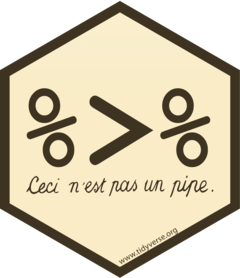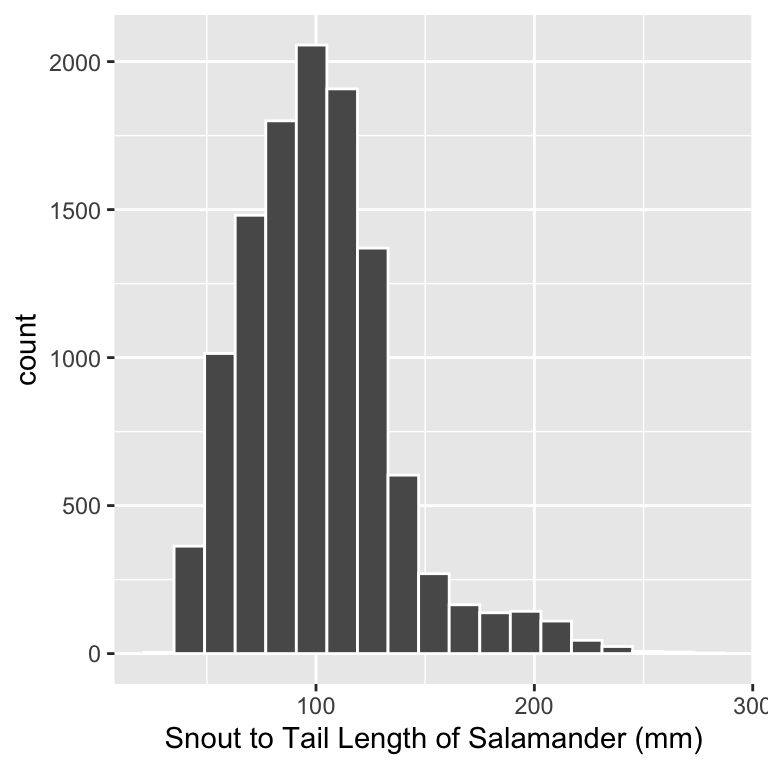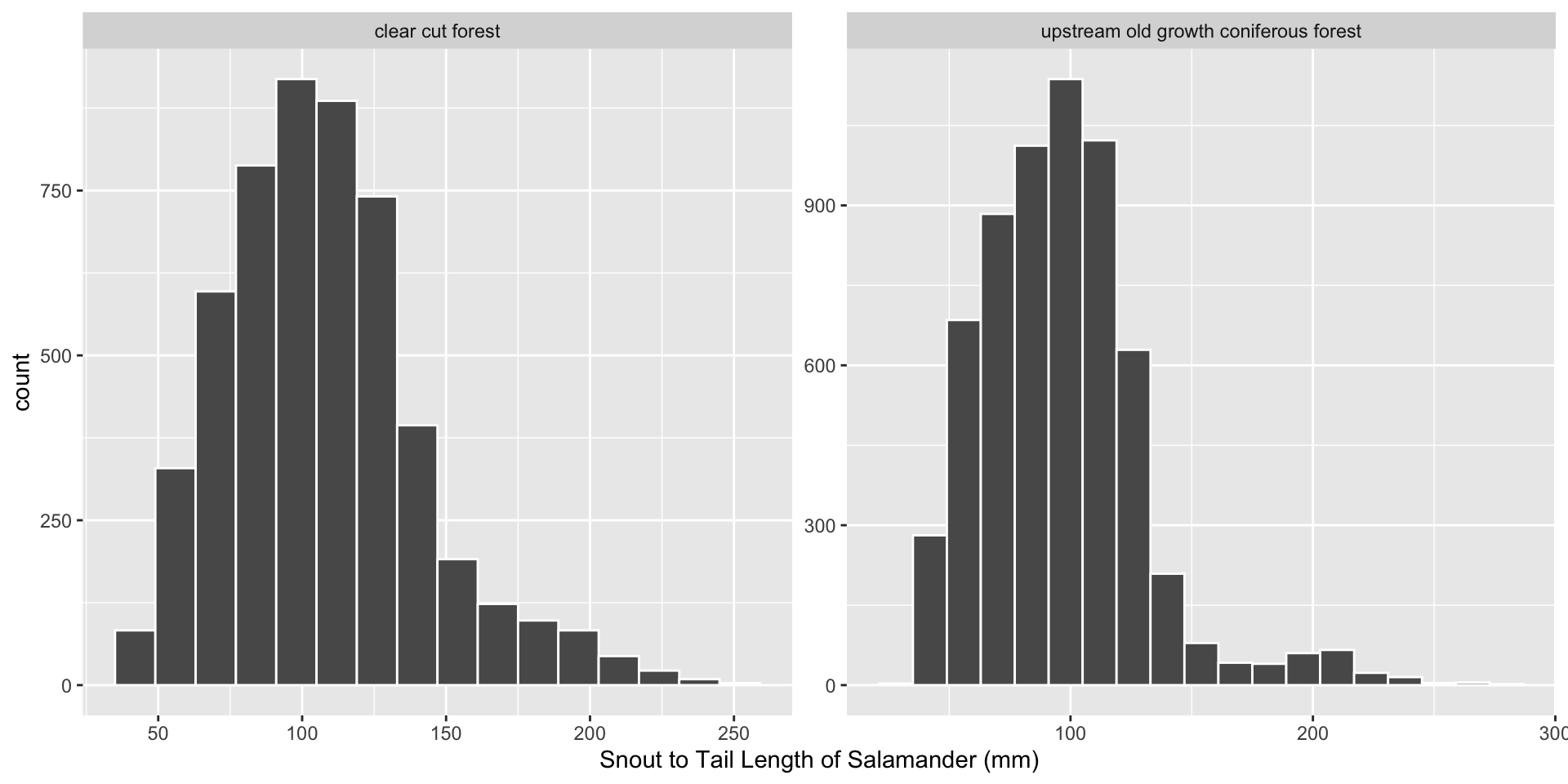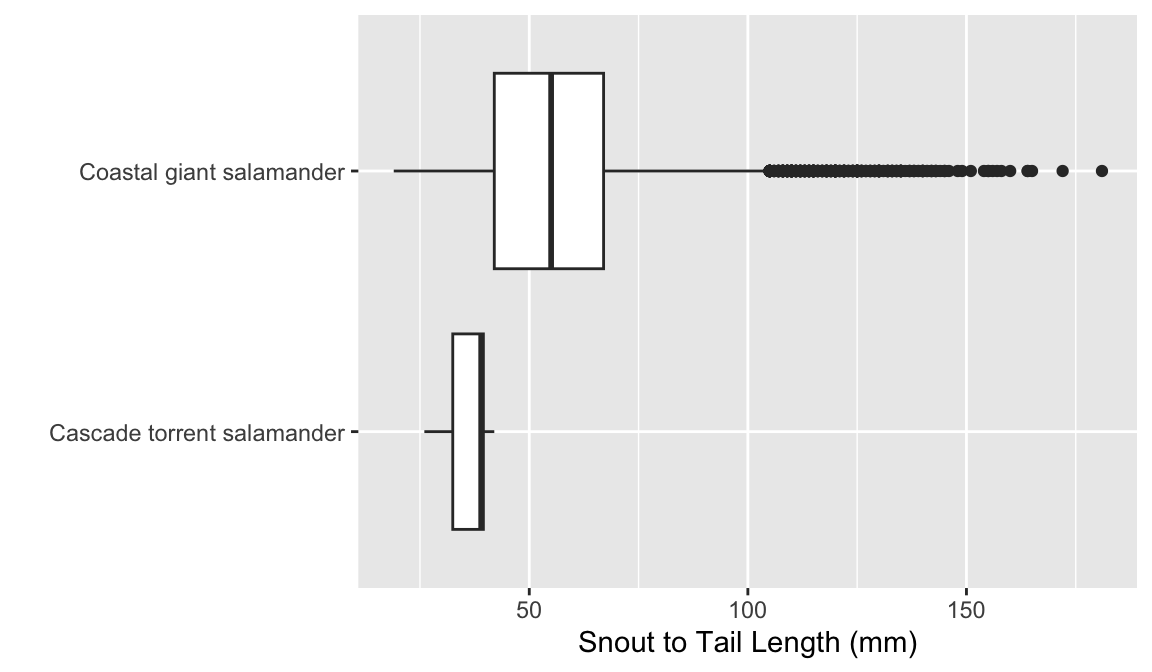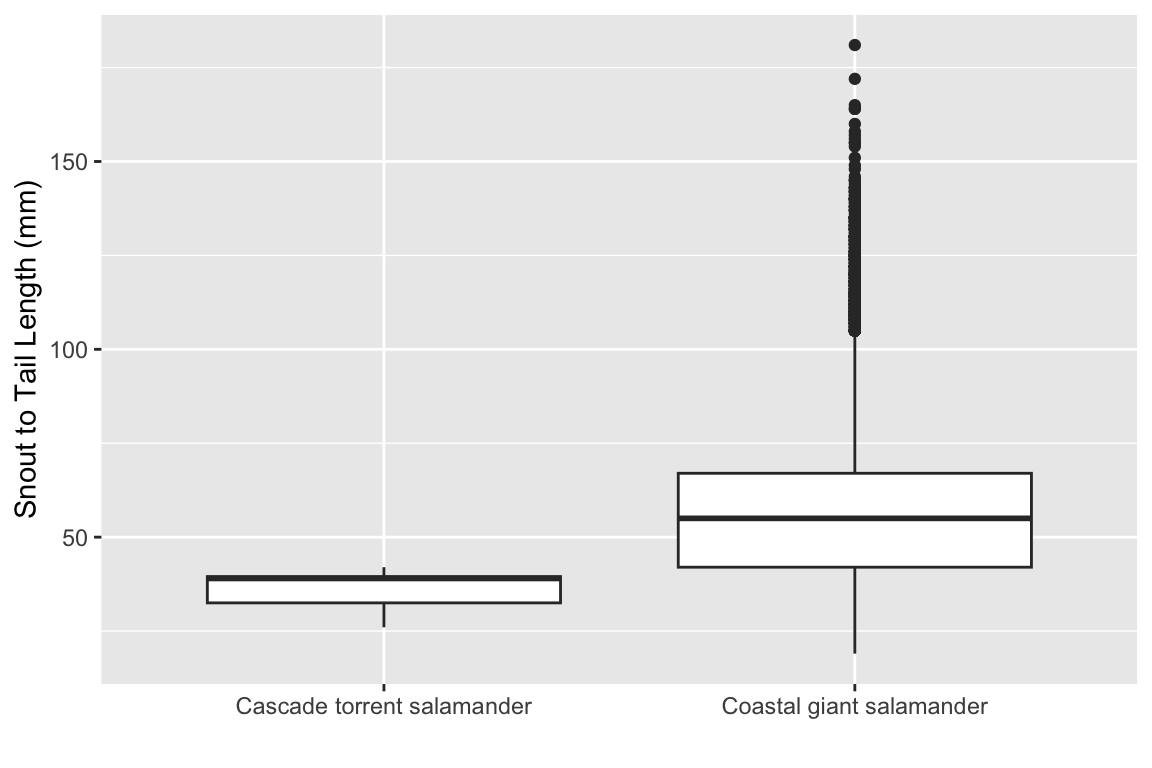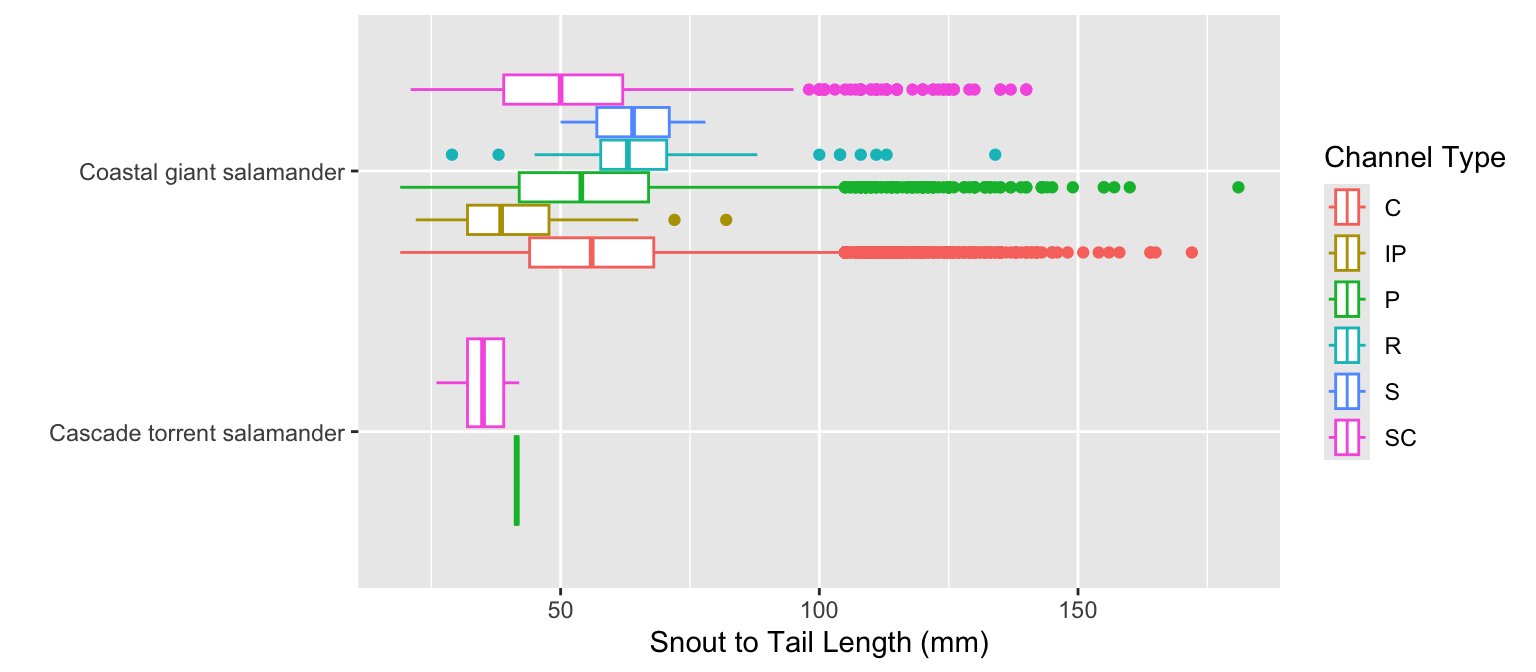trout %>%
group_by(section) %>%
summarize(
mean_length = mean(length_1_mm,
na.rm = TRUE)
)Incorporating Categorical Variables
Lab 1
Revisions
“Complete” = Satisfactory
- You provided responses to every question
- You correctly identified the observational unit for the
mpgdataset
“Incomplete” = Growing
- You did not provide responses to every question
- You did not correctly identify the observational unit for the
mpgdataset
Completing Revisions
Lab 1 revisions are due by Friday, April 18 (at midnight).
- Read comments on Canvas.
- Go back into your Lab 1 on Posit Cloud and complete your revisions.
- Render your revised Lab 1.
- Download your revised HTML.
Reflections
Revisions are required to be accompanied with reflections on what you learned while completing your revisions. Reflections must be written in your Lab 1 Quarto file (next to the problems you revised).
Categorical Variables
How would you describe a categorical variable?
In R…
categorical variables can have either character or factor data types
factor – structured & fixed number of levels / options
- can be ordered or unordered
character – unstructured & variable number of levels
- is inherently unordered
Fill in the associated data types (e.g. character, factor, integer, double) with each type of variable.
| Variable | Data Type in R |
|---|---|
| Categorical variable | |
| Continuous numerical variable | |
| Discrete numerical variable |
dplyr – a tool bag for data wrangling

filter()
select()
mutate()
summarize()
arrange()
group_by()
Brainstorm definitions for each verb
filter()
select()
mutate()
group_by()
summarize()
arrange()
The Pipe ![A hex of the pipe operator from the magrittr package. The pipe operator is a % followed by a > followed by another %, which is used to chain data wrangling operations together.]()
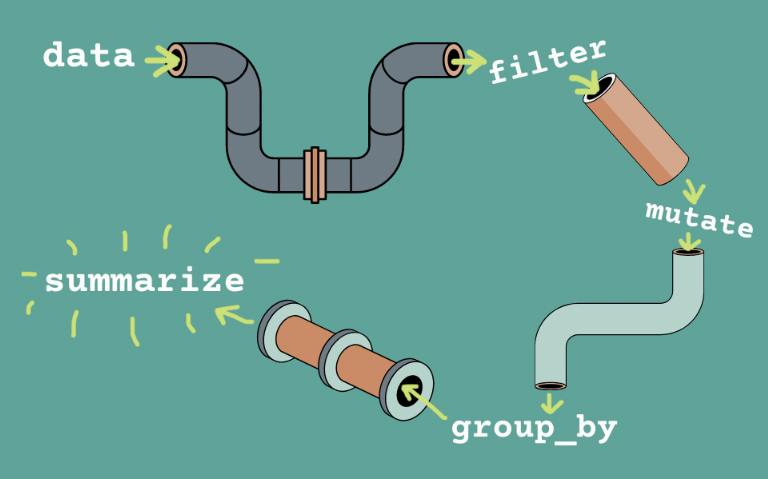
The Pipe in Action!
If you wanted means for each level of a categorical variable, what would you do?
Trout Size
The HJ Andrews Experimental Forest houses one of the larges long-term ecological research stations, specifically researching cutthroat trout and salamanders in clear cut or old growth sections of Mack Creek.
# A tibble: 2 × 2
section mean_length
<chr> <dbl>
1 clear cut forest 85.3
2 upstream old growth coniferous forest 81.4Why na.rm = TRUE?
Classifying Channel Types
The channels of the Mack Creek which were sampled were classified into the following groups:
"C"
"I"
"IP"
"P"
"R"
"S"
"SC"
NA
cascade
riffle
isolated pool
pool
rapid
step (small falls)
side channel
not sampled by unit
filter()-ing Specific Channel Types
The majority of the Cutthroat trout were captured in cascades (C), pools (P), and side channels (SC). Suppose we want to only retain these levels of the unittype variable.
%in% not ==!
Incorporating Categorical Variables into Data Visualizations
As a variable on the
x- ory-axisAs a
color/fillAs a facet
Salamander Size
How would this histogram look if there was no variation in salamander length?
What are possible causes for the variation in salamander length?
Faceted Histograms
Side-by-Side Boxplots
Colors in Boxplots
Facets & Colors in Boxplots
Facets & Colors in Boxplots
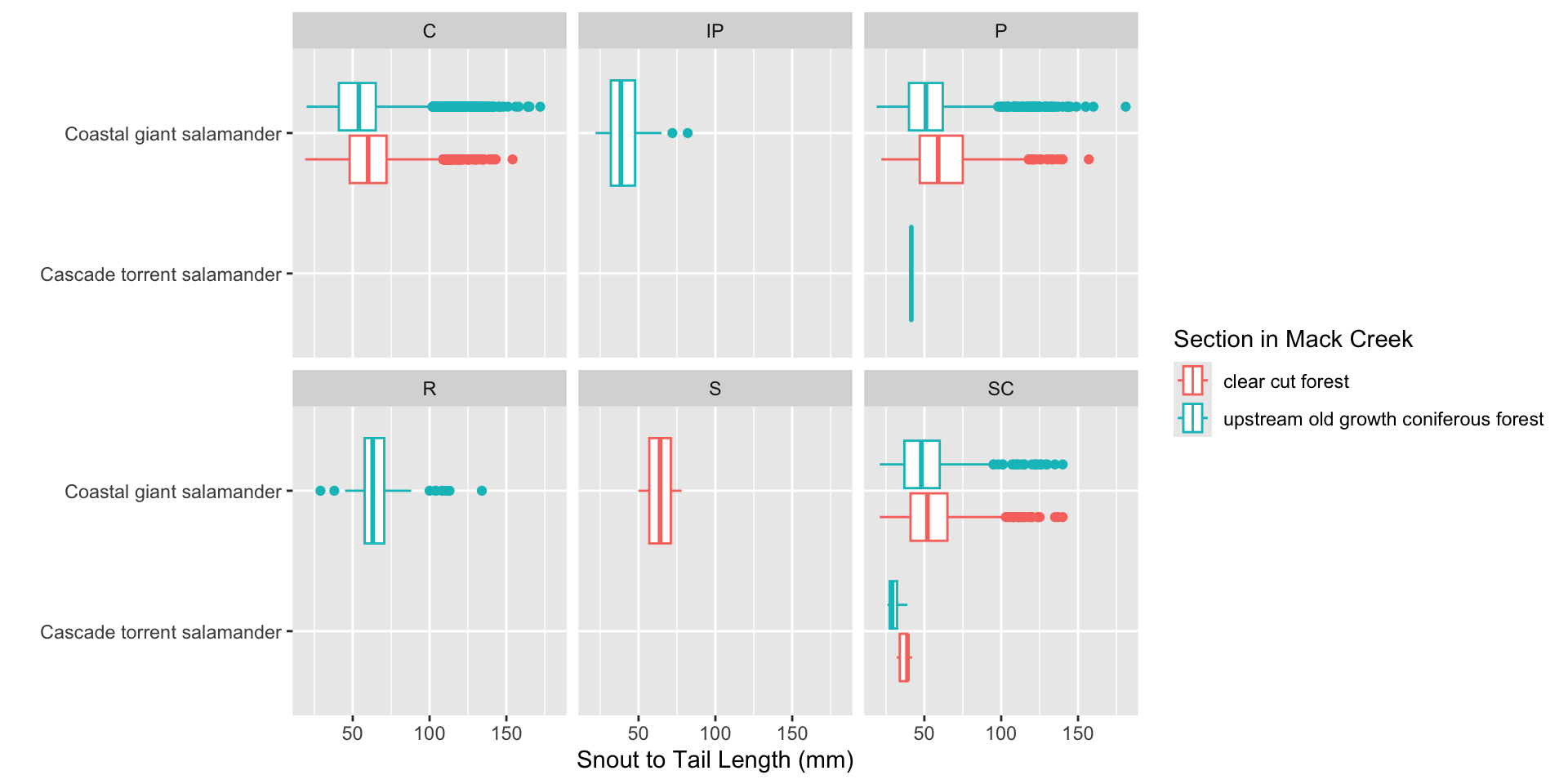
Facets & Color in Scatterplots
Facets & Color in Scatterplots
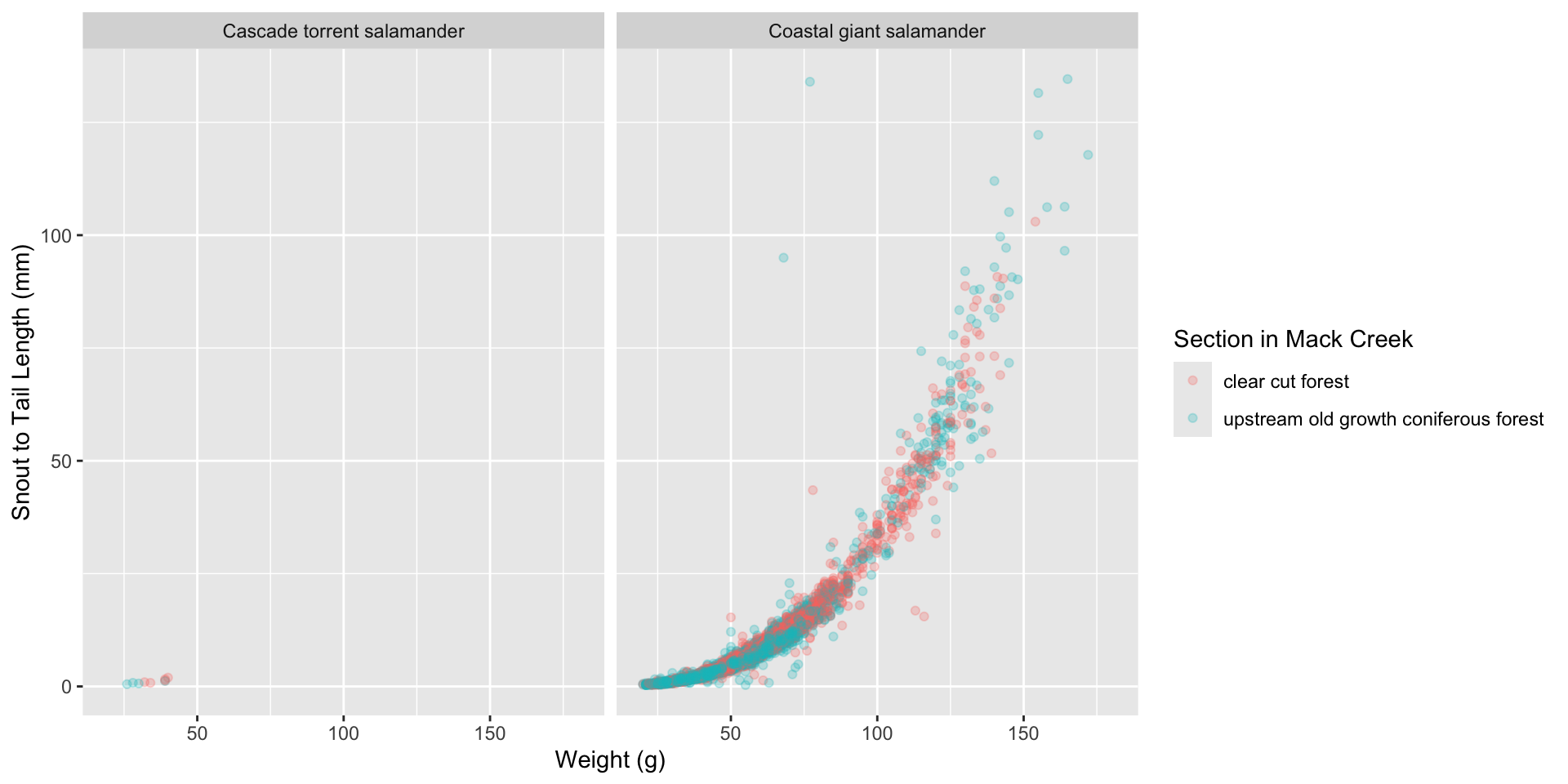
Your Turn – 90 seconds
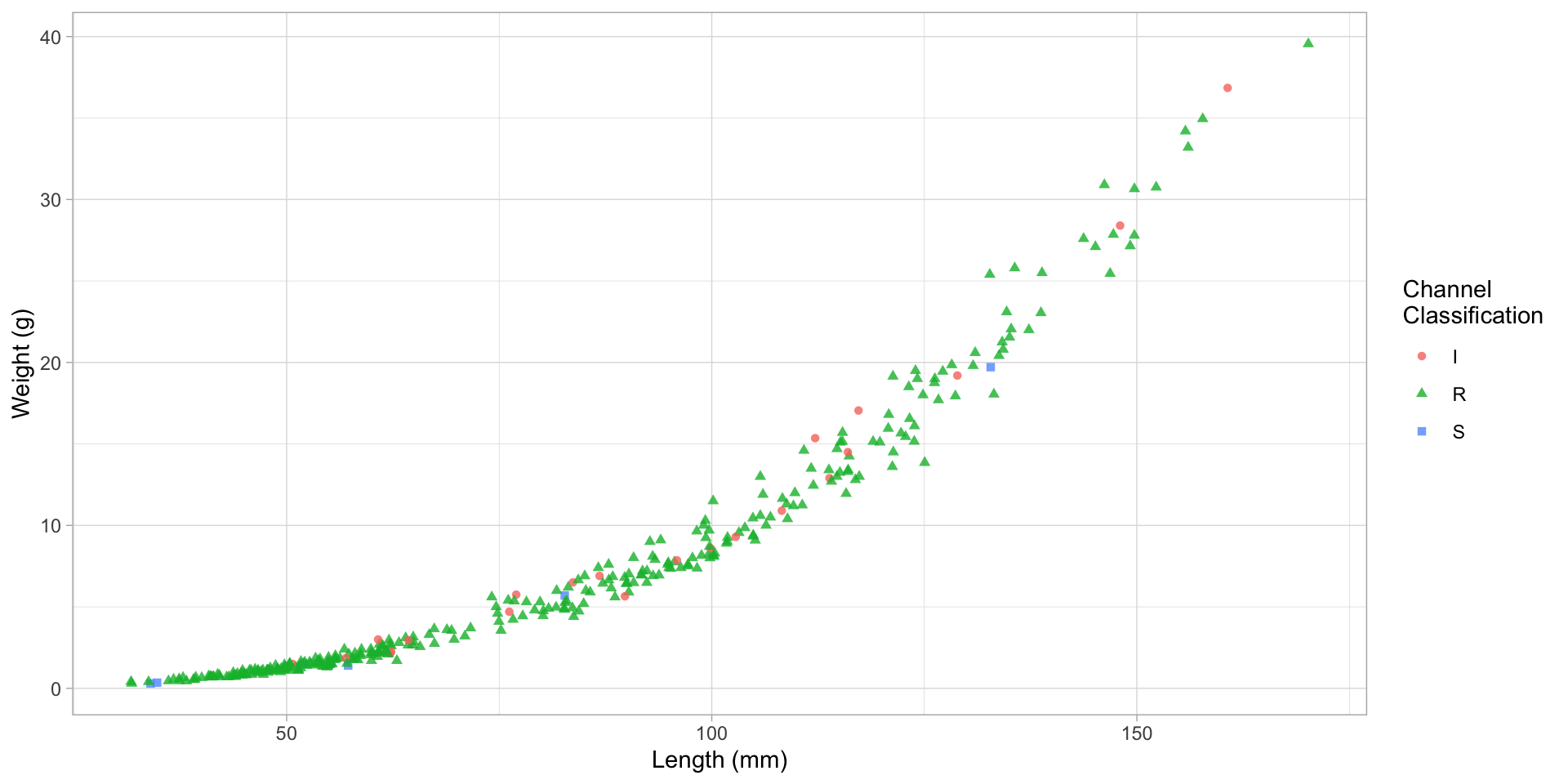
What are the aesthetics included in this plot?
What is one aspect of this plot that you believe is well done? What is one aspect of the plot that could be improved?
Statistical Critique
Your Tasks
- Find your visualizations
- Visualization from the New York Times
- Visualization from your chosen scientific article
- Discuss the
aesthetics included in the plots - Discuss what you believe the plot does well
- Discuss what improvements could be made to make the plot more clear
Reading a Research Paper
Your Tasks
Read the Background and Methods in the summary at the beginning of the Tuan et al. paper. Then answer the following questions:
What data is involved in this research study?
What are the research questions / research goals?

